Acorn Woodpeckers Hoard Thousands of Acorns in a Single Tree
That’s not even the weirdest thing about them.

Once a team of acorn woodpeckers has had their way with a tree, the tree is left nearly unrecognizable, and covered in small, individually bored holes. It becomes what is called a “granary tree.”
Acorn woodpeckers, which live along the west coast and in the southwest of North America, turn trees—as well as telephone poles and wooden siding—into storage units. They are the ultimate hoarders of the bird world, storing thousands of acorns in a single granary. There are even records of granaries with tens of thousands of estimated holes, which are utilized year and year again by the woodpeckers.


Squirrel heaven. (Photo: Julie Vader/Shutterstock.com)
When finding good granary tree candidates, the birds seek out dead limbs, snags, and trunks with nice, thick bark, selecting for areas of dead tree tissue to avoid drilling into the sap. In more urban habitats, they’ll use other forms of dead wood, often leaving people’s homes or sheds completely pockmarked.
Walt Koenig, a Senior Scientist at the Cornell Lab of Ornithology, hears homeowner complaints about acorn woodpeckers all the time. He provides them with a simple three-point plan: move out of your house, bulldoze it, and rebuild it in stucco. (People don’t particularly appreciate this advice, he admits.)

Going a little nuts. (Photo: Johnath/CC BY-SA 3.0)
“There are various ways you can stop them,” says Koenig. “But basically if you’re living in the middle of a good acorn woodpecker habitat, you really should have thought of that.”
Koenig wrote his thesis on acorn woodpeckers and has been studying them intently ever since, contributing to a research project that began in 1972. “They’re one of the most interesting birds in North America,” he says. “In fact, I can’t think of any others that even come close.”
And the granaries, it turns out, are only a small part of what makes them interesting.
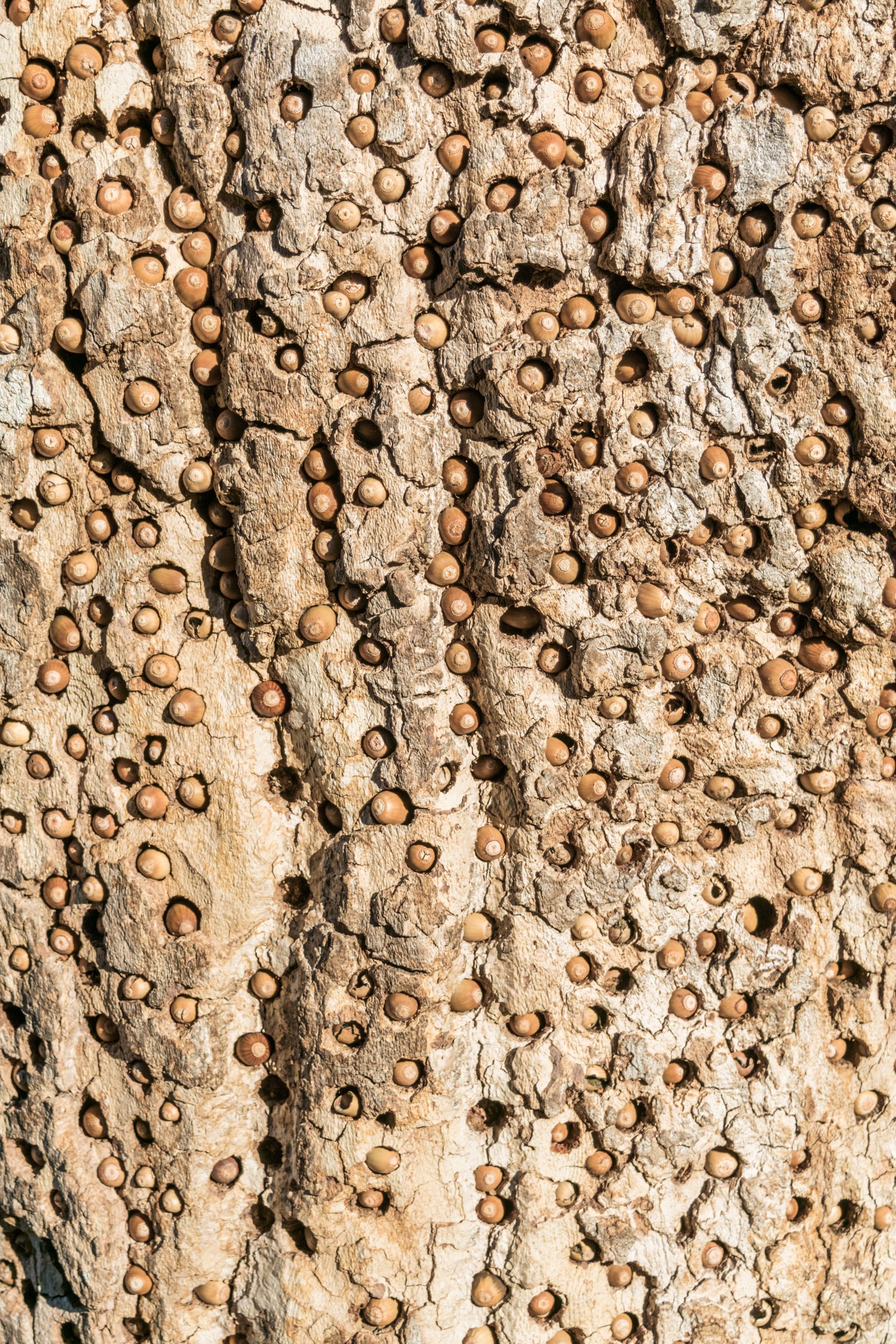
A single granary can store tens of thousands of acorns. (Photo: David Litman/Shutterstock.com)
The acorn woodpecker’s main food source is insects, but acorns and tree sap serve as key nutritional backup. Acorns are a critical resource, allowing the birds to make it through the winter. They live year-round in the same mild, Mediterranean climate, which gets wet but doesn’t necessarily freeze in winter; if they simply stored their acorns in piles, the nuts would mold and rot. Instead, they need a place where the nuts will dry out.
The granaries are labor-intensive in both their construction and upkeep: the woodpeckers drill holes sections at a time to lodge the individual acorns, but as acorns dry, they shrink—meaning that one of their major activities during the winter is moving the acorns into better-fitting holes within the granary. A robust acorn crop can even get the birds through until fall.

On the lookout for acorn thieves. (Photo: TinyGerhke/courtesy Cornell Lab of Ornithology)
One of the strangest traits of the acorn woodpecker, however, is its collective behavior—in both food storage and childrearing. Family groups, says Koenig, vary from a single pair of birds all the way up to a group of as many as 14 or 15.
The entire group will contribute to a central granary, defending it against thieving squirrels and other woodpeckers.
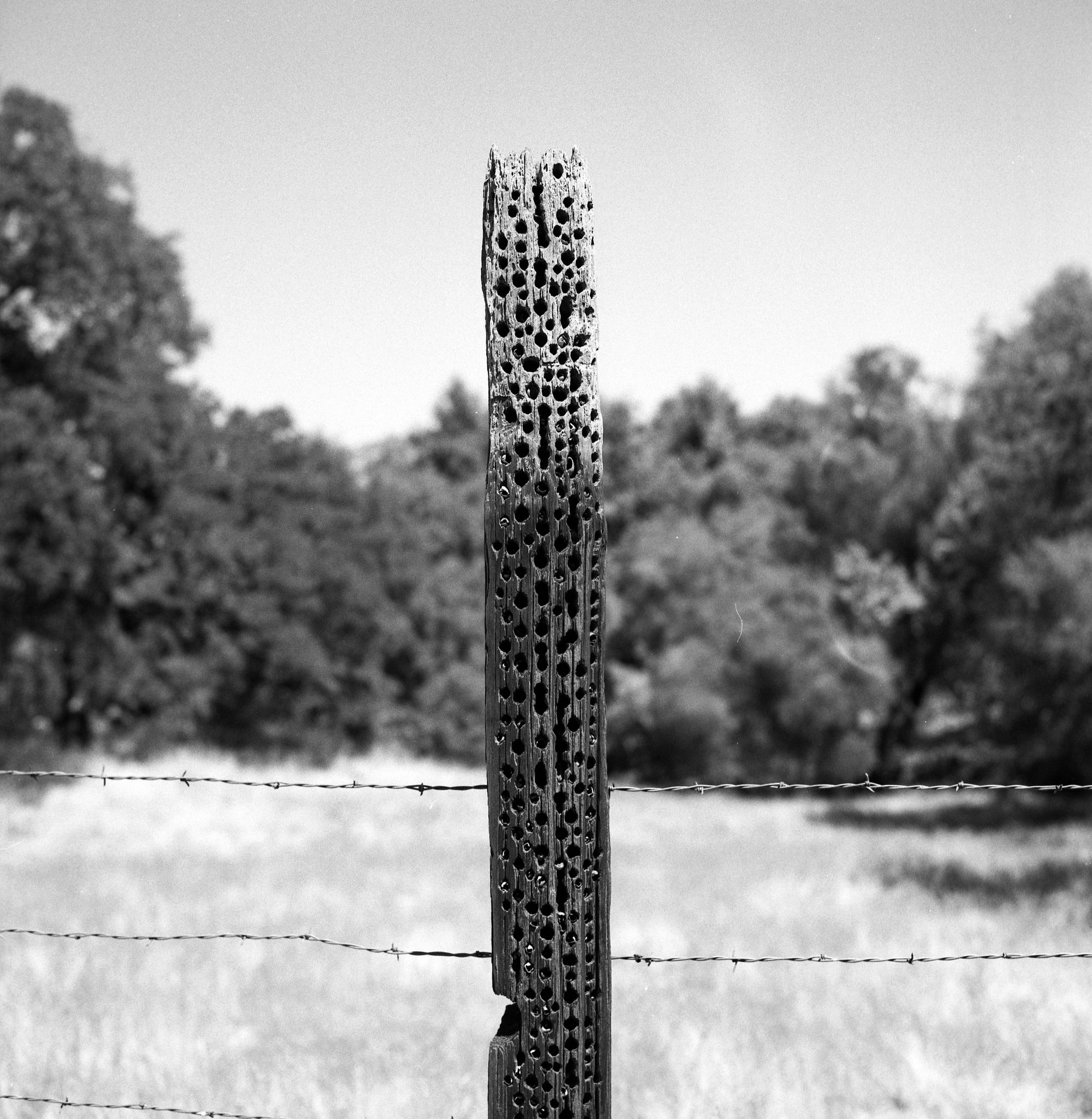
A fence post gets the granary treatment. (Photo: Giles Clark/CC BY-SA 2.0)
Acorn woodpeckers are distinctly polyamorous creatures. When it comes to raising young, it’s a group effort. Multiple males will sometimes share a few females, while the younger family members will serve as helpers. The most complicated groups have brothers and fathers and sons all sharing the same females, who might be two sisters or a mother and daughter, laying eggs in the same nest.
This is actually less effective, says Koenig, than if they bred off on their own on a per bird basis. Certain ecological constraints keep the family’s younger member’s from striking out on their own; they may not have another available territory outfitted with the granary and nesting holes that are critical to their success and survival. As a result, the teens are better off staying home until they can hopefully fill a vacancy in another granary group.
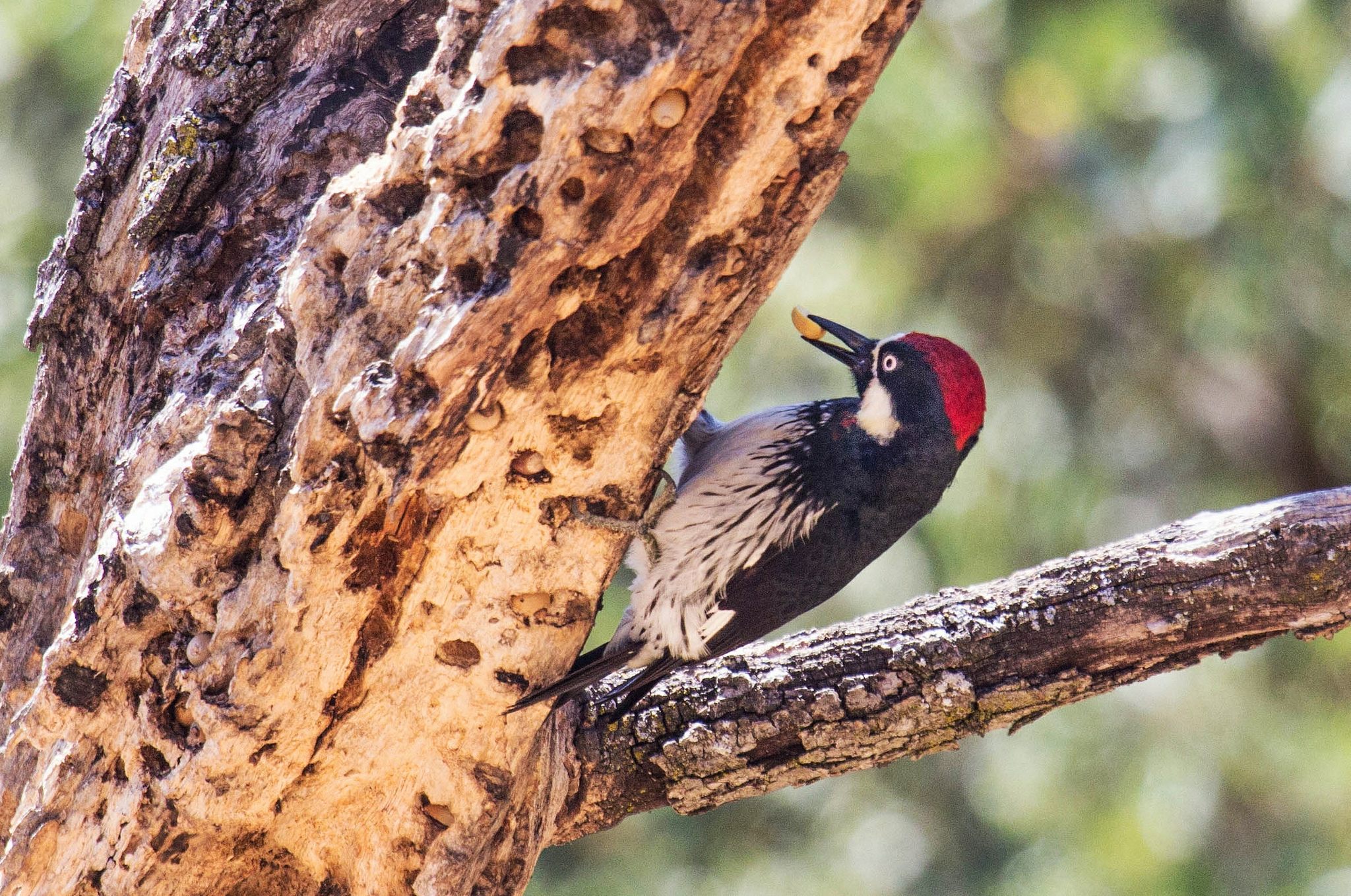
But which hole to choose? (Photo: Allan Hack/CC BY-ND 2.0)
When a nest has two females, things get tricky. The two females will keep removing each other’s eggs from the nest until they finally synchronize their egg-laying, an effort undertaken so that neither expectant mother’s hatchlings have a head start.
The cast-away eggs get eaten by other family members, which means that the birds are essentially eating their nephews, nieces, and grandchildren, points out Koenig. Only about a quarter of groups have this two-female system, producing a slightly larger clutch size of six to nine surviving eggs.
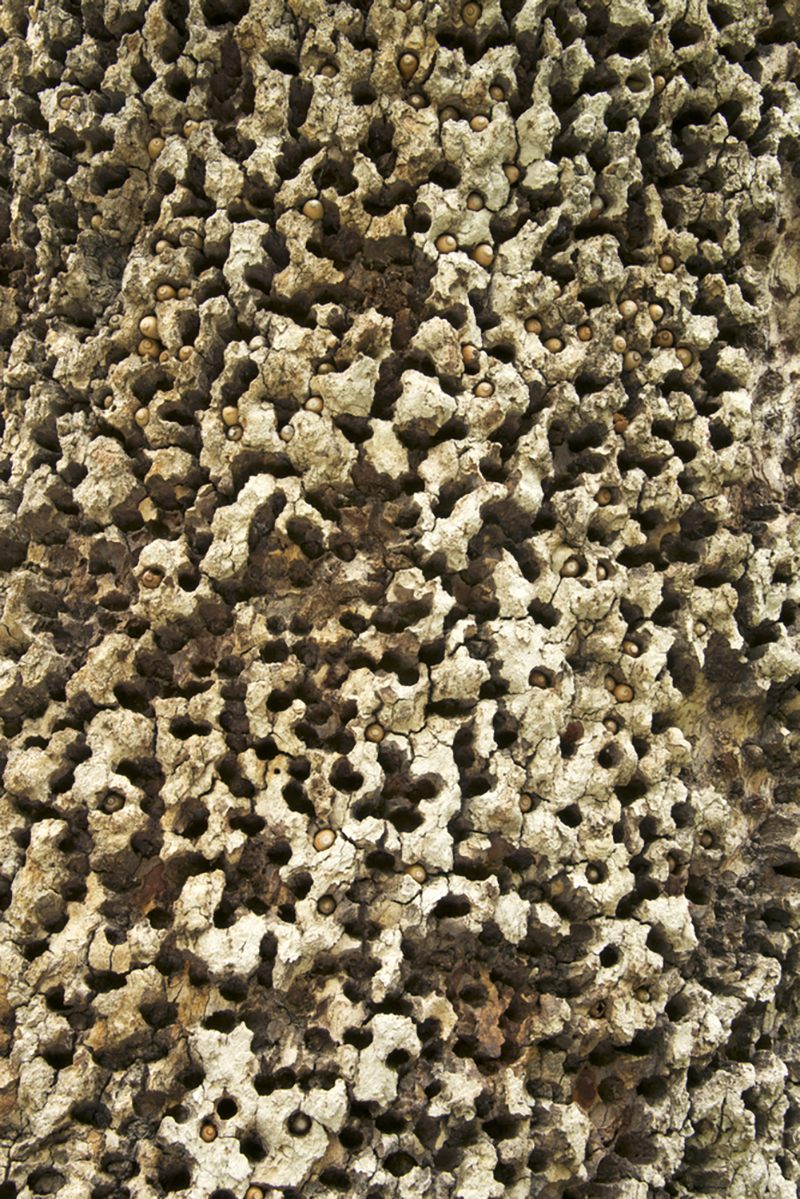
After years of wear and tear, an old granary needs to be swapped out for a new one. (Photo: Sheila Fitzgerald/Shutterstock.com)
But there’s an obvious hitch to polyamorous collectives: the risk of incest.
Koenig says that back in the day, people thought that avoiding incest was a purely human thing. Indeed, instances of incest in the wild are uncommon, as most species just don’t have much opportunity for it.
However, in a group of acorn woodpeckers, where everyone is related to everyone else—the breeder males and females and communal offspring—the specter of incest looms large.

This Jeffrey pine has been repurposed. (Photo: margot Vigeant/CC BY-SA 2.0)
If there is a lone breeder female and she dies, the group needs an non-incestuous outside replacement. Younger male and female woodpeckers from other groups, keen for opportunities to start their own families, will arrive to the territory and fight in sibling coalitions for the open spot. The bigger the coalition, the better their odds of securing one or two members of their group the status of new breeder female. Koenig says it is a really good case of incest avoidance in birds.
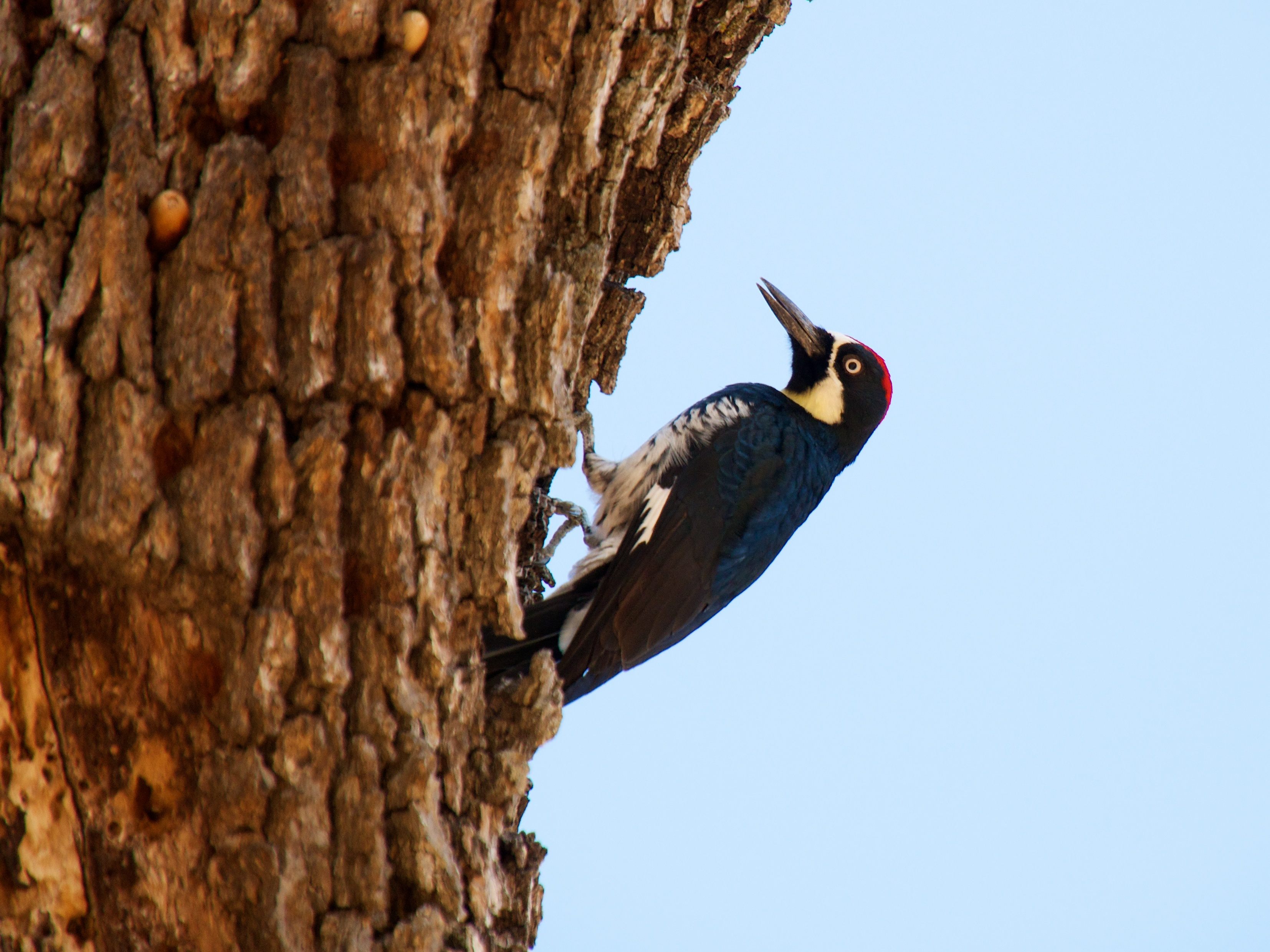
A lot more than meets the eye. (Photo: Don DeBold/CC BY 2.0)
Koenig says he could go on and on about acorn woodpeckers. Between their unique community collectives, epic granaries, and quirky breeding tactics, there’s already a lot more going on than initially meets the eye.
The next time you spot an old oak or telephone pole that looks like the victim of an insect-borne disease or BB gun target practice, the culprit will no longer be a mystery.






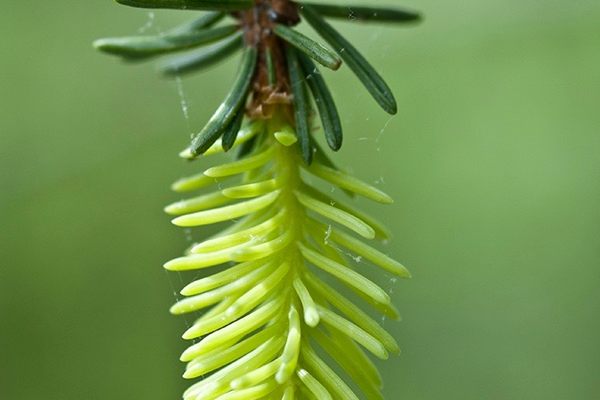














Follow us on Twitter to get the latest on the world's hidden wonders.
Like us on Facebook to get the latest on the world's hidden wonders.
Follow us on Twitter Like us on Facebook